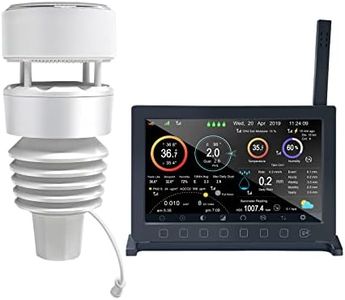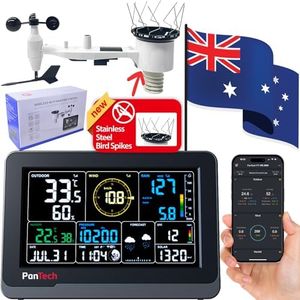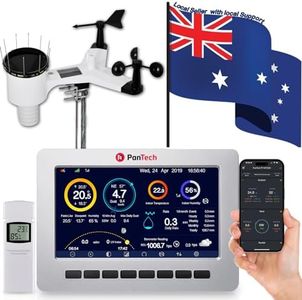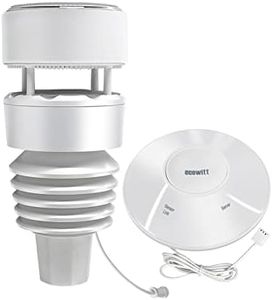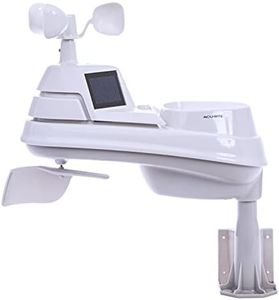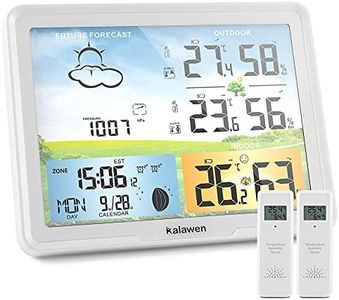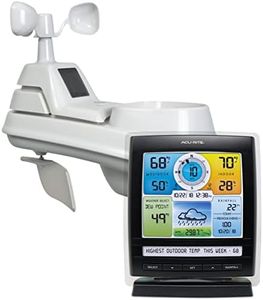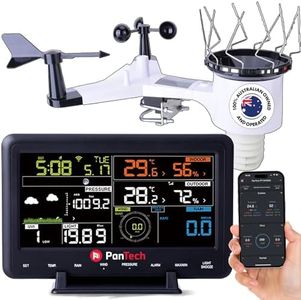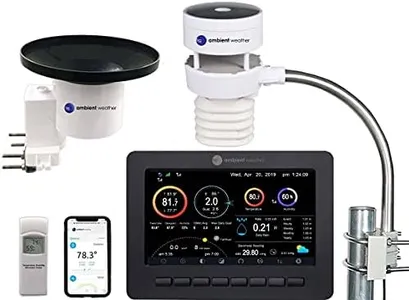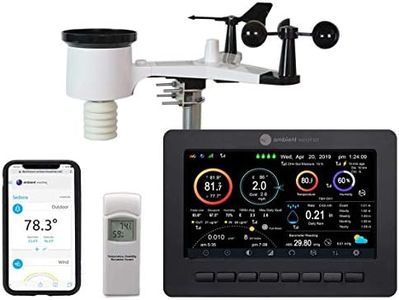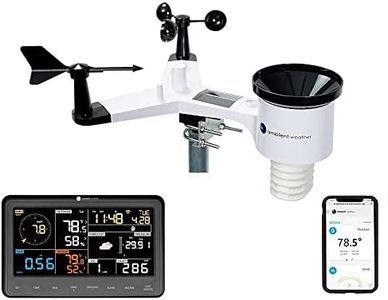We Use CookiesWe use cookies to enhance the security, performance,
functionality and for analytical and promotional activities. By continuing to browse this site you
are agreeing to our privacy policy
10 Best Wireless Weather Stations
From leading brands and best sellers available on the web.Buying Guide for the Best Wireless Weather Stations
Choosing a wireless weather station is all about understanding what you want to monitor and how much detail you need. Wireless weather stations can give you insight into local weather conditions, help you plan day-to-day activities, and provide data for hobbies like gardening or fishing. To get the best fit for your needs, you should pay attention to several main specifications that influence accuracy, usability, and connectivity. Let’s walk through the essential features you should look out for and how each one impacts your experience.Sensor TypesSensor types refer to the weather conditions a station can monitor, such as temperature, humidity, rainfall, wind speed, wind direction, and sometimes UV or air quality. This spec is important because it shapes what kind of information you'll get. Basic stations track only indoor and outdoor temperature and humidity, which is enough for casual daily use. More advanced stations add sensors for wind and rainfall, great for gardening or weather enthusiasts. If you pursue specific activities like farming or sailing, sensors for UV, barometric pressure, or solar radiation might be essential. Decide what information will actually be useful to you and choose a model with those sensors—there’s no need to pay for extras you’ll never watch.
Wireless RangeThe wireless range tells you how far apart you can place the outdoor sensors and the indoor display unit. A larger range is important if you have a big property or thick walls that might block the signal. Ranges typically fall into segments: up to 100 feet works for small homes or apartments, up to 300 feet fits medium yards or houses, and up to 1,000 feet is designed for very large spaces or properties. To pick the right range, measure or estimate the distance from where you want the outdoor sensor to go to the display’s location, factoring in walls and obstacles—it's always safer to go a bit higher if you’re unsure.
Display TypeDisplay type covers how you see your data, with options ranging from simple monochrome screens to colorful, backlit digital displays or even smartphone app interfaces. Good displays make your weather info easy to read at a glance, day or night. Basic displays simply show numbers and might be fine for minimal setups. Backlit or color displays are ideal if you want easy reading across a room or in low light. Some stations transmit data to your phone or computer, which is useful if you want alerts or to check conditions remotely. Choose a display that fits where you’ll use the station and how often you want to interact with it.
Data Logging and ConnectivityData logging means the station keeps a history of weather measurements over time, while connectivity refers to the ways you can access and share your data, such as Wi-Fi, Bluetooth, or USB. Data logging is important if you want to track patterns, compare past weather, or get automatic reports. Connectivity options let you view weather info online, get alerts, or even add your data to public weather networks. Some stations store only recent records, while others keep months or years of data. If you only check the weather now and then, you may not need extensive logging or connectivity. On the other hand, if you love analyzing weather trends or want remote access, make sure your station has these features and check how you retrieve the data.
Power SourcePower source describes how the station and sensors are powered—usually batteries, solar panels, or wall plugs. This matters for maintenance and reliability. Battery-powered options are flexible and easy to place anywhere, but you’ll need to replace batteries periodically. Solar-powered sensors can run for long time with minimal attention, though they need access to sunlight and may have backup batteries for cloudy days. Wall plug units are steady, but you need an outlet nearby. Think about access to sunlight, power outlets, and how much maintenance you want when choosing the best power option for your situation.

